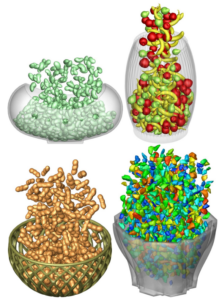Yuntian Feng
Swansea University, United Kingdom
Developing contact theories and models for non-spherical particles in general and arbitrarily shaped particles in particular has been a major research theme in DEM for the last thirty years. In this keynote lecture, the focus will be on the development of an energy-conserving contact theory and associated models for arbitrarily shaped particles. The lecture will begin by reviewing the major developments in the field and highlighting the key challenges and issues that have hindered progress in discrete element modelling of arbitrarily shaped particles. Next, the development of the energy-conserving theory will be presented, which includes 1) introducing the sole assumption that the contact state of two particles is fully described by a contact energy function/potential; 2) imposing the energy-conserving principle that the total kinetic energy must be conserved for an elastic impact; and 3) automatically deriving a general normal contact model in terms of the three contact features: contact normal, contact point, and force magnitude. Such a contact model guarantees to be energy-conserving for any elastic impact, leading to more robust and stable contact models for any contact scenarios. Three energy conserving contact models are established by carefully choosing the contact energy function: the contact area/volume based model, the overlap based model and the contact boundary based model. The first model obtains the three contact features from the intersection line(s) of the two particles, while the second model proposes a generic overlap-based contact model by introducing the Minkowski-difference overlap, which unifies the definition of overlap for both convex and concave particles. The third model defines a contact potential using the contact boundary, and its discretised versions cover some existing contact models. Finally, numerical examples are presented to illustrate the performance of the contact theory and models.
